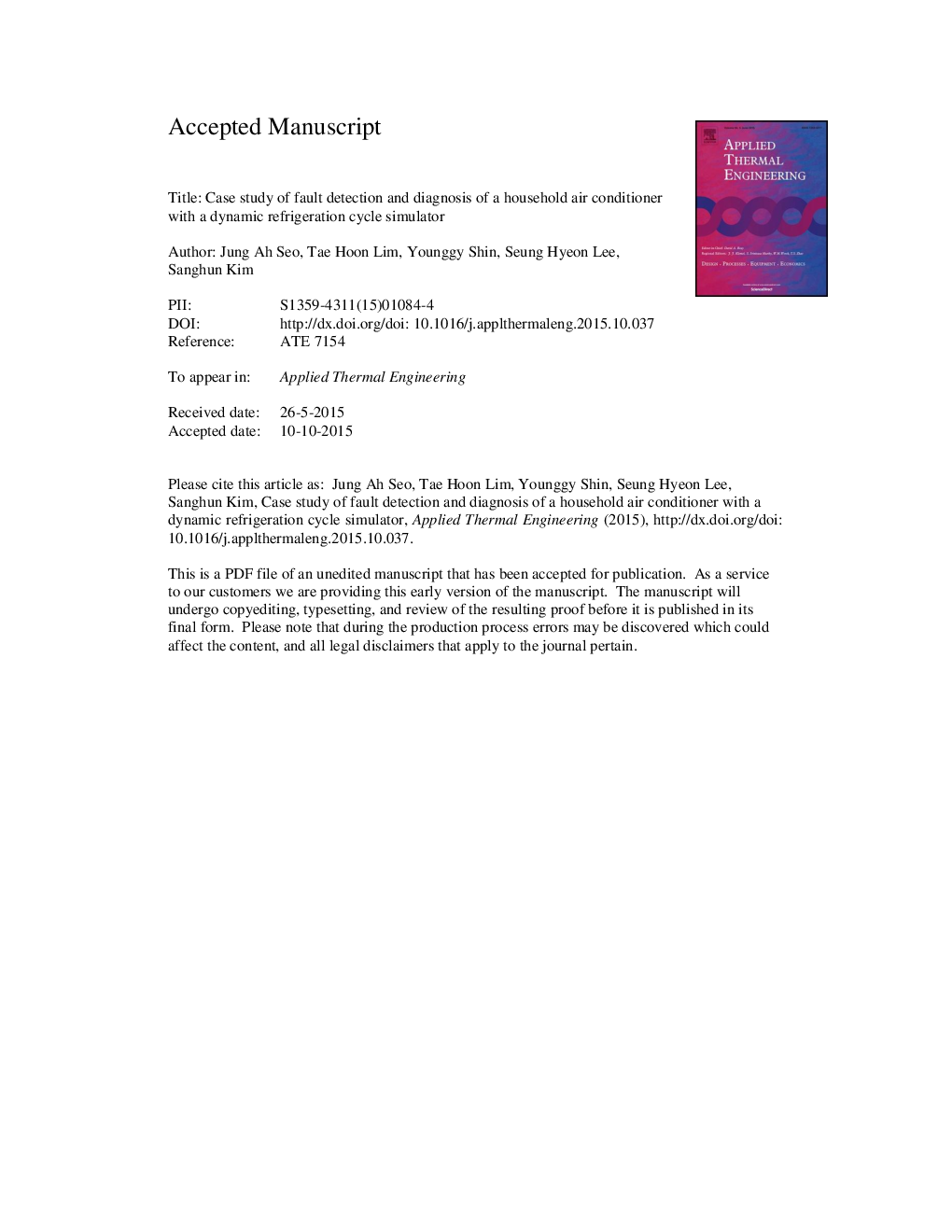| Article ID | Journal | Published Year | Pages | File Type |
|---|---|---|---|---|
| 644775 | Applied Thermal Engineering | 2016 | 23 Pages |
Abstract
A high fidelity refrigeration cycle simulator was developed using the moving boundary method and the simulator's performance was confirmed with test data of a household air conditioner. The simulator showed a good agreement with the test data. The simulator was applied as a virtual test bed to generate normal and faulty operation data which were needed to develop FDD algorithm. To evaluate the feasibility of the simulator for FDD development, a typical time-varying cooling load was generated and normal and faulty cases were simulated. Steady state filter was constructed from moving average and standard deviation. Evaporator fouling was diagnosed by comparing estimated UA at a given fan speed with normal UA at the same fan speed. Superheat cannot be controlled when an EEV gets stuck. Time-integrated superheat error was found to be a good indicator to detect the fault.
Keywords
Related Topics
Physical Sciences and Engineering
Chemical Engineering
Fluid Flow and Transfer Processes
Authors
Jung Ah Seo, Tae Hoon Lim, Younggy Shin, Seung Hyeon Lee, Sanghun Kim,
